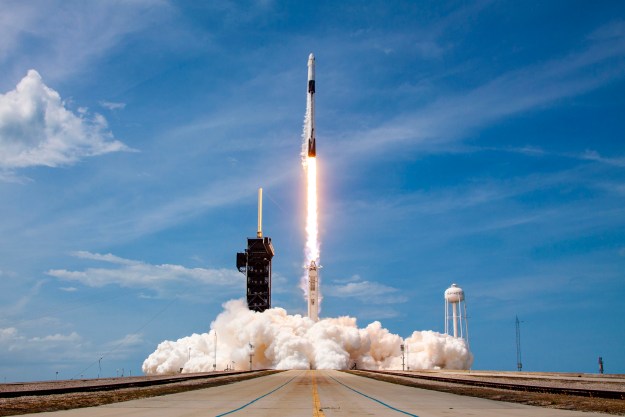NASA needs decent weather conditions to be able to launch its next-generation rocket toward the moon in the Artemis I mission on Monday, and the latest forecast suggests the 98-meter-tall vehicle will be able to lift off as scheduled from the Kennedy Space Center in Florida.
According to the latest forecast from the 45th Weather Squadron, which provides detailed assessments for air and space operations in the U.S., NASA’s new Space Launch System (SLS) rocket and Orion spacecraft will be clear to blast off from the launchpad at the start of the two-hour launch window at 8:33 a.m. ET on Monday, August 29.
The squadron, which issued its latest forecast on Sunday, said it was mostly concerned about nearby cumulus clouds, as well as precipitation and thunderstorms, which have been present in the area in recent days.
But after assessing all of the available data, it concluded that there is an 80% chance of acceptable weather conditions at 8:33 a.m. ET, though this will gradually drop to 60% as we move toward the end of the launch window of 10:33 a.m. ET.
With that in mind, NASA will be keen to ignite the engines of the most powerful rocket it’s ever built at the earliest possible opportunity, in other words, at 8:33 a.m. ET.
The uncrewed Artemis I mission marks the start of a new era of space exploration and will send the Orion spacecraft on a six-week voyage that will include a fly-by of the moon. Assuming the mission goes to plan, NASA will follow up with the Artemis II mission that takes the same route, but this time with astronauts on board. That mission will pave the way for the ambitious Artemis III mission, possibly in 2025, that will put the first woman and first person of color on the lunar surface.
With the weather looking good for tomorrow, only a last-minute technical issue can disrupt the launch schedule from hereon in. Otherwise it’s all systems go for Monday’s much-anticipated launch.
NASA is providing a livestream of the day’s events, starting at 6:30 a.m. ET. Here’s how to watch the build-up and launch as it happens.
Editors' Recommendations
- How to watch the final launch of ULA’s mighty Delta IV Heavy rocket
- Five rocket launches to look out for in 2024
- SpaceX eyeing weather for Thursday’s Falcon Heavy launch. Here’s how it looks
- SpaceX needs good weather for Starship launch. Here’s how it’s looking
- How to watch SpaceX launch world’s most powerful rocket on Saturday


